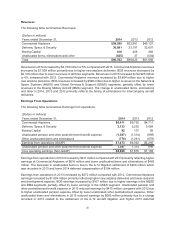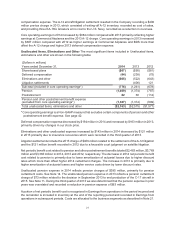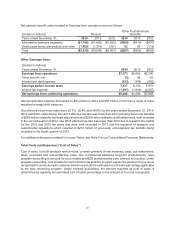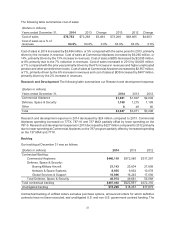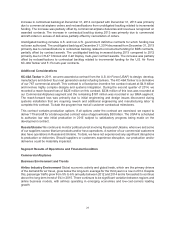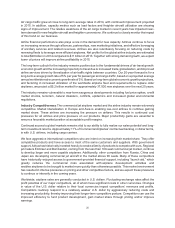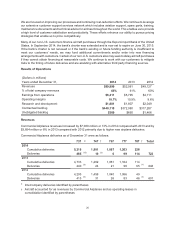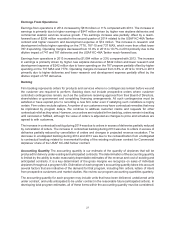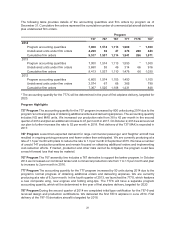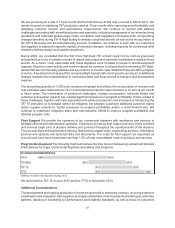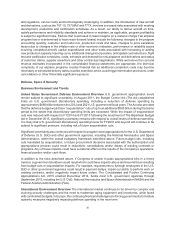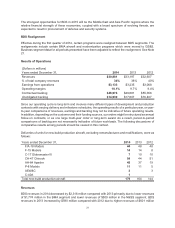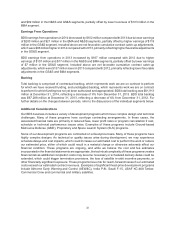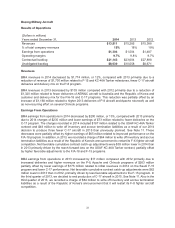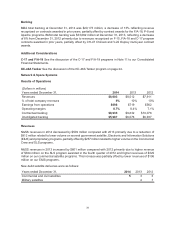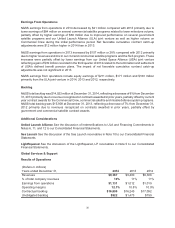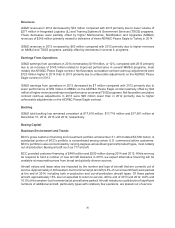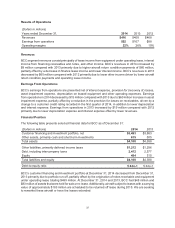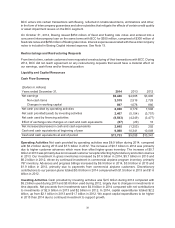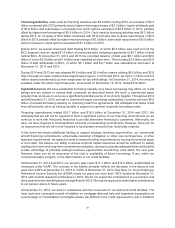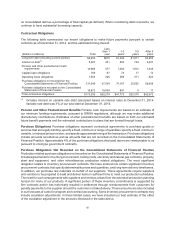Boeing 2014 Annual Report Download - page 42
Download and view the complete annual report
Please find page 42 of the 2014 Boeing annual report below. You can navigate through the pages in the report by either clicking on the pages listed below, or by using the keyword search tool below to find specific information within the annual report.30
and regulators, can be costly and technologically challenging. In addition, the introduction of new aircraft
and derivatives, such as the 787-10, 737 MAX and 777X, involves increased risks associated with meeting
development, production and certification schedules. As a result, our ability to deliver aircraft on time,
satisfy performance and reliability standards and achieve or maintain, as applicable, program profitability
is subject to significant risks. Factors that could result in lower margins (or a material charge if an airplane
program has or is determined to have reach-forward losses) include the following: changes to the program
accounting quantity, customer and model mix, production costs and rates, changes to price escalation
factors due to changes in the inflation rate or other economic indicators, performance or reliability issues
involving completed aircraft, capital expenditures and other costs associated with increasing or adding
new production capacity, learning curve, additional change incorporation, anticipated cost reductions, flight
test and certification schedules, costs, schedule and demand for new airplanes and derivatives and status
of customer claims, supplier assertions and other contractual negotiations. While we believe the cost and
revenue estimates incorporated in the consolidated financial statements are appropriate, the technical
complexity of our airplane programs creates financial risk as additional completion costs may become
necessary or scheduled delivery dates could be extended, which could trigger termination provisions, order
cancellations or other financially significant exposure.
Defense, Space & Security
Business Environment and Trends
United States Government Defense Environment Overview U.S. government appropriation levels
remain subject to significant uncertainty. In August 2011, the Budget Control Act (The Act) established
limits on U.S. government discretionary spending, including a reduction of defense spending by
approximately $490 billion between the 2012 and 2021 U.S. government fiscal years. The Act also provided
that the defense budget would face “sequestration” cuts of up to an additional $500 billion during that same
period to the extent that discretionary spending limits are exceeded. While the impact of sequestration
cuts was reduced with respect to FY2014 and FY2015 following the enactment of The Bipartisan Budget
Act in December 2013, significant uncertainty remains with respect to overall levels of defense spending.
It is likely that U.S. government discretionary spending levels for FY2016 and beyond will continue to be
subject to significant pressure, including risk of future sequestration cuts.
Significant uncertainty also continues with respect to program-level appropriations for the U.S. Department
of Defense (U.S. DoD) and other government agencies, including the National Aeronautics and Space
Administration, within the overall budgetary framework described above. Future budget cuts, including
cuts mandated by sequestration, or future procurement decisions associated with the authorization and
appropriations process could result in reductions, cancellations and/or delays of existing contracts or
programs. Any of these impacts could have a material effect on the results of the Company’s operations,
financial position and/or cash flows.
In addition to the risks described above, if Congress is unable to pass appropriations bills in a timely
manner, a government shutdown could result which could have impacts above and beyond those resulting
from budget cuts or sequestration impacts. For example, requirements to furlough employees in the U.S.
DoD or other government agencies could result in payment delays, impair our ability to perform work on
existing contracts, and/or negatively impact future orders. The Consolidated and Further Continuing
Appropriations Act, 2015 enacted December 2014, funds most U.S. government agencies through
September 2015, including the U.S. DoD, National Aeronautics and Space Administration (NASA) and the
Federal Aviation Administration (FAA).
International Environment Overview The international market continues to be driven by complex and
evolving security challenges and the need to modernize aging equipment and inventories, while faced
with constrained budgets. In Europe, the continuing financial challenges are forcing governments to institute
austerity measures negatively impacting defense spending in the near term.


